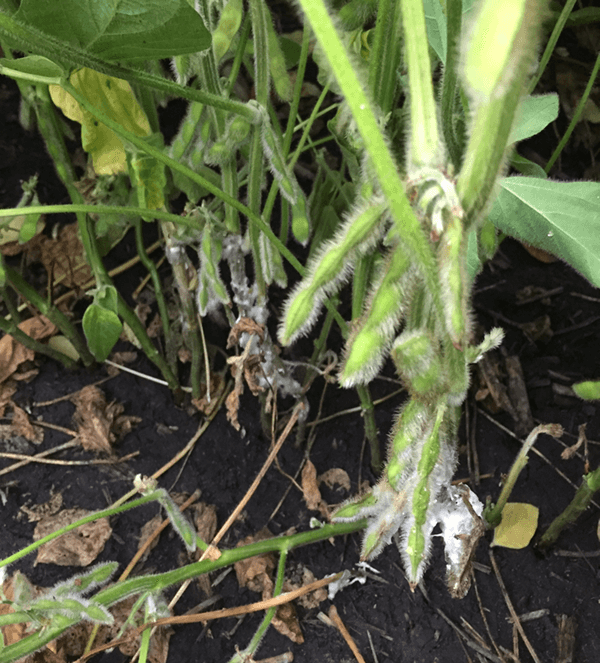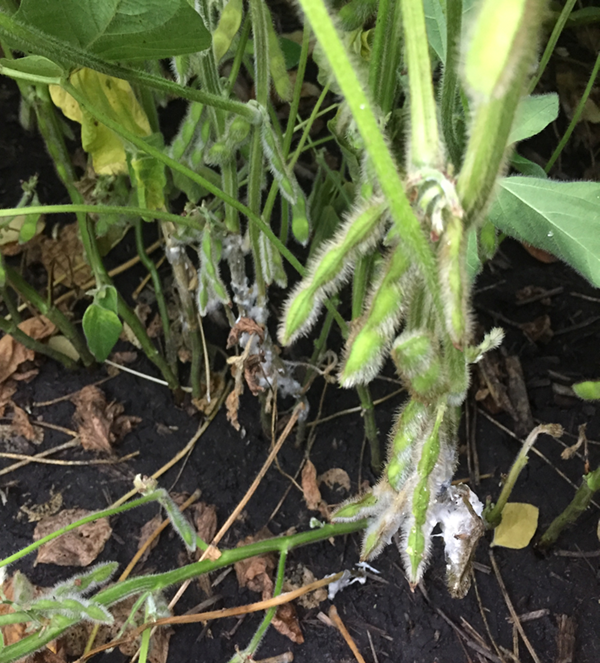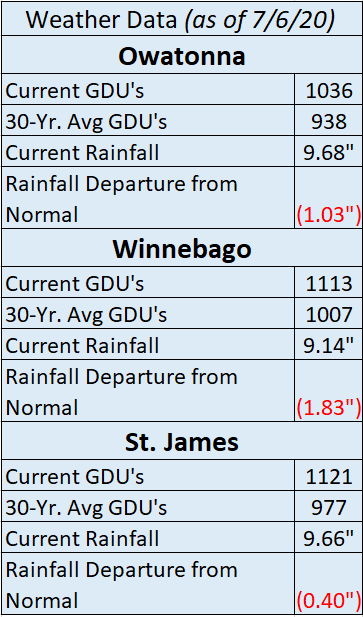With the vast amount of White Mold in soybeans across southern MN in the last few years, and many soybean acres off to the most aggressive start in growth in many years, there are increasing concerns on the potential White Mold problems we could see this year.
Temperature and moisture have a dramatic impact on the prevalence of White Mold. Consider the factors that contribute to SWM (Sclerotinia White Mold) development:
- Sclerotia (hard-black structures/mouse droppings) overwinter in the soil
- They can survive deep in the soil for up to 7 years
- Sclerotia germinate within top 2” of the soil when soils are cool, moist, and shaded
- Temperatures near 55 F to 60 F are optimum
- Once germinated, they produce apothecia that produce spores that infect soybeans through dying flowers
- Senescing flowers, dead or dying tissue and wet surfaces are ideal, with more than 12 hours of daily wetness
- Infection is worse with temperatures lower than 85°F with moisture (from rain, dew, humidity)
- Commonly takes 3-4 weeks to see the infection, and 6 weeks to see it from the road!
There are 3 components that are required for white mold to occur: a susceptible soybean variety that is flowering, apothecia that produce spores, and a cool, wet environment, especially under the soybean canopy. The higher the amount of each component, the worse the incidence of White Mold becomes.
White Mold punishes highly productive fields. The White Mold disease cycle explains the factors that contribute to SWM: a high yield potential crop with a dense canopy, field history of SWM, and a history of susceptible crops planted in the field. A denser canopy, the greater the chance of incidence. Temperatures and rainfall in the last part of June has the potential to be a large contributing factor to SWM across the countryside. |



